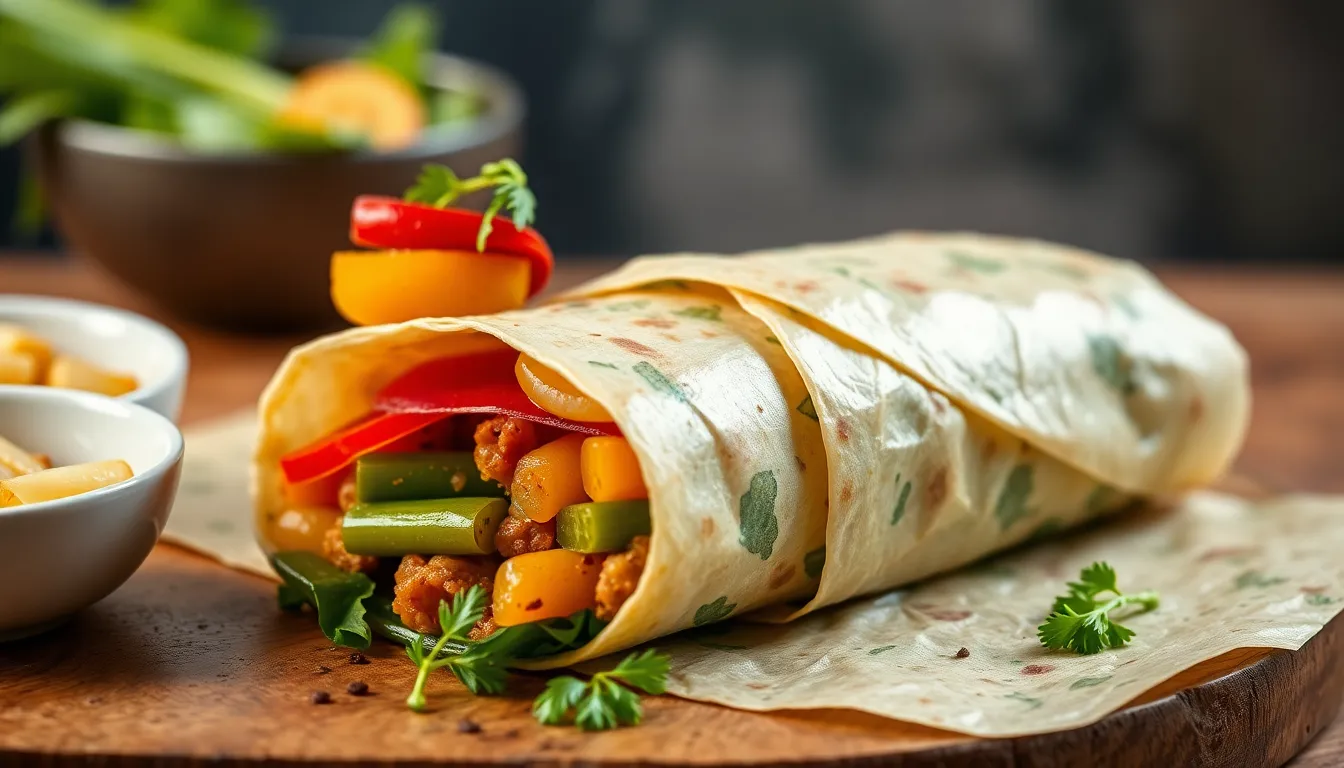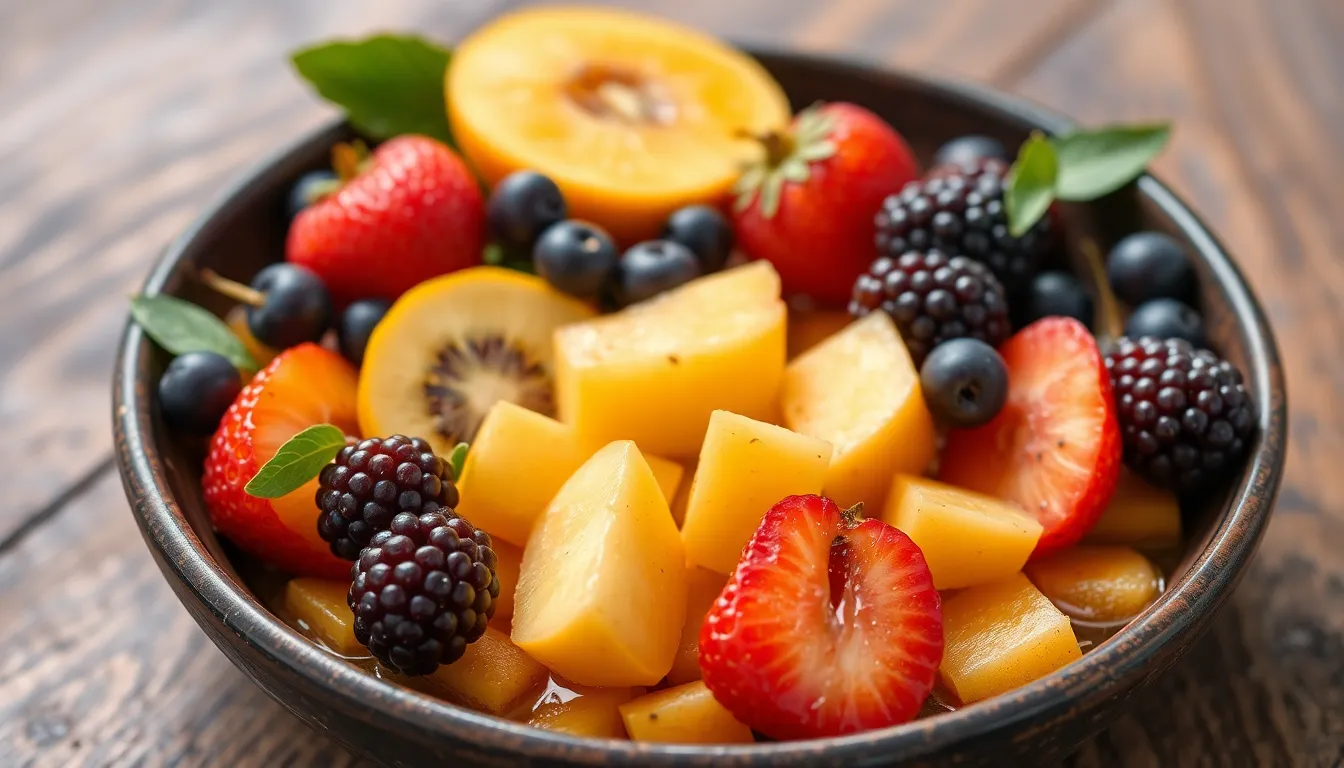How to Make a Stir-Fry with Frozen Ingredients
Introduction
Stir-frying is a vibrant cooking method that combines heat, quick movements, and a dash of creativity. This age-old Asian technique allows you to cook food rapidly in a small amount of oil, preserving texture and flavor while ensuring that your meals are quick and satisfying. One of the best aspects of stir-frying is its versatility, allowing for a range of ingredients to be utilized.
In our busy lives, the convenience of using frozen ingredients can’t be overstated. Frozen vegetables and proteins provide a quick and easy solution without sacrificing nutrition or flavor. In this article, we will delve into the benefits of using frozen ingredients, essential components for a frozen stir-fry, and a step-by-step guide to create your own delicious dish. Let’s get cooking!
Section 1: Benefits of Using Frozen Ingredients
Subsection 1.1: Nutritional Value
Many people believe that fresh ingredients are always superior in terms of nutrition. However, this isn’t necessarily the case. Frozen vegetables are often picked at their peak ripeness and flash-frozen to lock in nutrients. Research has shown that many frozen vegetables can retain similar, if not identical, nutritional values compared to their fresh counterparts.
- Frozen vegetables are rich in vitamins and minerals.
- They provide a convenient way to maintain a balanced diet year-round.
- Frozen fruits are also a great addition to smoothies, desserts, and more.
Subsection 1.2: Convenience
Using frozen ingredients simplifies meal prep significantly. Here are some time-saving aspects to consider:
- No need to wash, chop, or peel—frozen vegetables can go straight from the freezer to the pan.
- Long shelf life means you can keep frozen ingredients on hand without worrying about spoilage.
- Quick cooking times mean meals can be ready in under 30 minutes.
Subsection 1.3: Cost-Effectiveness
Cost is always a factor in meal planning. A comparison between fresh and frozen ingredients typically shows that frozen vegetables and proteins can be more economical, especially if you frequently waste fresh produce. Here’s how:
- Buying in bulk can reduce the cost per meal.
- Frozen items are often on sale, providing additional savings.
- Less food waste means more savings over time.
Section 2: Essential Ingredients for a Frozen Stir-Fry
Subsection 2.1: Frozen Vegetables
When it comes to frozen vegetables, the options are almost limitless. Here are some recommended types for stir-fries:
- Bell Peppers (any color)
- Broccoli Florets
- Snap Peas
- Mixed Stir-Fry Vegetable Blends
- Carrots (sliced or julienned)
Subsection 2.2: Proteins
Adding protein to your stir-fry enhances the dish’s nutritional value and makes it more filling. Here are some great frozen protein options:
- Frozen Chicken Breast (diced or sliced)
- Shrimp (peeled and deveined)
- Firm or extra-firm Tofu (cubed)
- Beef or Pork Strips (for varied flavors)
Subsection 2.3: Stir-Fry Sauces
The right sauce can elevate your stir-fry from good to extraordinary. Consider the following:
- Store-bought: Teriyaki Sauce, Soy Sauce, Sweet and Sour Sauce
- Homemade Options: Garlic Soy Sauce, Peanut Sauce, or Spicy Szechuan Sauce
Recommended Frozen Ingredients for Stir-Fry
| Ingredient Type | Recommended Options | Cooking Time |
|---|---|---|
| Vegetables | Bell Peppers, Broccoli, Snap Peas | 5-7 minutes |
| Proteins | Chicken, Shrimp, Tofu | 7-10 minutes |
| Sauces | Teriyaki, Soy Sauce, Homemade Garlic Sauce | N/A |
Section 3: Step-by-Step Guide to Making a Frozen Stir-Fry
Subsection 3.1: Preparation
Before you start cooking, preparation is key. You can choose to thaw your frozen ingredients or cook them directly from frozen. Cooking from frozen saves time and retains the vegetables’ crunch. If you prefer thawing, do so in the refrigerator overnight or use the microwave’s defrost setting.
Subsection 3.2: Cooking Method
To achieve the best results, here’s a rundown of the equipment you’ll need and the cooking sequence:
- Equipment: Wok or large skillet, spatula, and a lid (optional).
- Cooking Sequence:
- Heat the wok or skillet over high heat.
- Add a small amount of oil (vegetable or sesame) and swirl to coat the surface.
- Add the frozen protein first, stirring constantly until cooked through.
- Add the frozen vegetables, stir-frying quickly to retain their crunch.
- Pour in your sauce and toss everything together until well coated and heated through.
Subsection 3.3: Final Touches
To elevate your stir-fry, consider the following final touches:
- Add fresh herbs such as cilantro or green onions for garnish.
- Top with sesame seeds for added texture.
- Serve over rice, quinoa, or noodles for a complete meal.
Section 4: Tips for Perfecting Your Stir-Fry
Subsection 4.1: Avoiding Soggy Vegetables
One of the biggest pitfalls in stir-frying is ending up with soggy vegetables. To avoid this:
- Cook on high heat to quickly sear the ingredients.
- Keep stirring constantly to avoid steaming.
- Don’t overcrowd the pan; cook in batches if necessary.
Subsection 4.2: Flavor Enhancements
To add flair to your stir-fry, consider these flavor-enhancing tips:
- Incorporate spices such as ginger, garlic, or red pepper flakes.
- Try a splash of rice vinegar or lime juice for acidity.
- Experiment with different herbs to complement your ingredients.
Subsection 4.3: Customizing Your Stir-Fry
Customization is where your creativity shines. Here are some ideas:
- Switch up the protein to suit your taste—try adding nuts for a vegetarian option.
- Mix in different sauces to create an entirely new flavor profile.
- Use seasonal vegetables to keep things fresh and exciting.
Conclusion
Creating a delicious stir-fry using frozen ingredients is both simple and rewarding. This method allows for a quick meal that doesn’t compromise on nutrition or flavor. With the right ingredients and a bit of creativity, you can whip up a delightful dish in no time. So next time you’re in a rush, remember that your freezer holds the key to a fantastic stir-fry!




